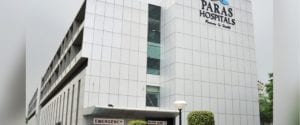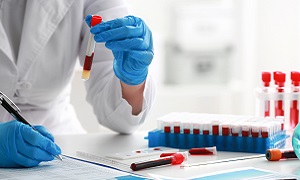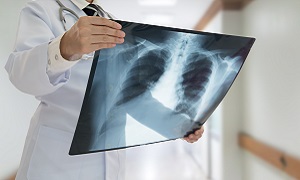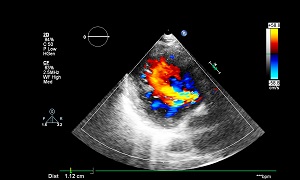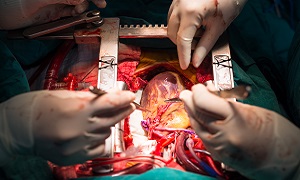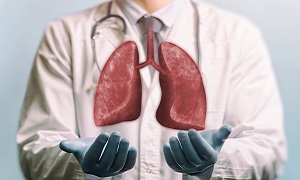Best Doctors in India for Pulmonary Hypertension Treatment
Best Hospitals in India for Pulmonary Hypertension Treatment
Paras Hospital, Gurugram
- City: Gurugram, India
Hospital Highlights:
- Paras hospital was established in 2006 and is the 250 bedded flagship hospital of Paras Healthcare.
- The is supported by a team of doctors of international and national repute.
- The hospital is NABH accredited and also the first hospital in the region to have a NABL accredited laboratory.
- The hospital provides specialty medical services in around 55 departments including Neurosciences, Joint Replacement, Mother & Child Care, Minimal Invasive Surgery, Gynecology and Obstetrics, Ophthalmology, Dermatology, Endocrinology, Rheumatology, Cosmetic and Plastic surgery.
- The hospital is equipped with state-of-the-art technologies.
S L Raheja Hospital, Mahim, Mumbai
- City: Mumbai, India
Hospital Highlights:
- SL Raheja hospital is a 140-bed multi-specialty tertiary care hospital that is being managed by Fortis Healthcare Ltd.
- The hospital is a benchmark in healthcare and medical facilities in the neighborhood of Mahim & the western suburbs.
- L.Raheja Hospital, Mahim has one of the most effective ICU and Casualty care services.
- The hospital provides specialty medical services in Cardiology, Oncology, Neurology, Orthopedics, Mother & Child Care, and in Diabetes.
Wockhardt Hospitals, Mumbai
- City: Mumbai, India
Hospital Highlights:
- Wockhardt Hospitals were established in the year 1973, originally called First Hospitals and Heart Institute.
- Wockhardt Hospitals are super specialty health care networks in India, nurtured by Wockhardt Ltd, India’s 5th largest Pharmaceutical and Healthcare company.
- Wockhardt Hospitals is associated with Partners Harvard Medical International, an international arm of Harvard Medical School, USA.
- Wockhardt Heart Hospital performed India’s first endoscopic heart surgery.
- The hospital has a state-of-the-art infrastructure equipped with the latest technologies and modern equipment.
- It has special Centers of Excellence dedicated to the major specialties to provide hassle-free and high-quality clinical care.
Pushpawati Singhania Hospital & Research Institute, New Delhi
- City: New Delhi, India
Hospital Highlights:
- Established in 1996, Pushpawati Singhania Research Institute is one of the top hospitals in the NCR region, as well as one of the top facilities in India for gastroenterology. The hospital is one of South Asia’s first institutes in medical and surgical treatment for diseases related to digestion.
- The hospital is equipped with state-of-the art facilities coupled with the latest equipment as well as renowned consultants from various parts of India as well as other parts of the world.
W Pratiksha Hospital, Gurgaon
- City: Gurugram, India
Hospital Highlights:
- W Pratiksha Hospital, Gurugram, is one of the best hospitals in the NCR region. It is also a top hospital in India for IVF. Since its inception, the hospital has performed over 5500 successful IVFs. The hospital also specializes in gynecology.
- With over 20 years of experience in providing quality healthcare, the hospital is known as one of the most trusted and valued health providers in India.
- Equipped with world-class medical facilities and advanced technology, the hospital’s doctors and clinicians also have a track record of delivering excellent results. The hospital is also known for focusing on preventive well-being as much as on curative treatment.
- The hospital has earned the trust of its patients, by providing the best available treatments at affordable costs.
Narayana Superspeciality Hospital, Gurugram
- City: Gurugram, India
Hospital Highlights:
- Situated near DLF Cyber City, Gurugram, Narayana Superspecialty Hospital is one of the top medical facilities in the Delhi NCR region, catering to the needs of the people. Known for its commitment to quality medical care and patient service, the hospital is a state-of-the-art facility with planned and well-equipped sections, which includes a spacious OPD area as well as comfortable patient rooms.
- It is the closest super-specialty hospital from Indira Gandhi International Airport towards Gurugram, and also the nearest super specialty hospital from DLF Cyber City. It is also close to major residential areas in Gurugram.
- It is part of the renowned Narayana Health Group. Established in 2000, by Dr. Devi Shetty, a renowned cardiac surgeon, it has grown to be one fo India’s leading healthcare groups.
Sir Ganga Ram Hospital, New Delhi
- City: New Delhi, India
Hospital Highlights:
- Sir Ganga Ram Hospital, New Delhi is known to provide the latest medical procedures with the latest technology in all of its units.
- The hospital has a team of reputed doctors, nurses, and healthcare professionals that ensure that patients receive quality care at affordable costs.
- Staffed with a team of highly qualified doctors, dedicated nurses, and paramedical and non-medical staff, the hospital aims to lead in healthcare delivery, medical education, training, and research.
- As per the vision of the founder, the hospital also provides free treatment to the economically weaker sections of society.
- Sir Ganga Ram Hospital also provides training to young doctors under the Diplomate in National Board(DNB) program. The DNB program at the hospital was started in 1984 and it is known for currently running the maximum number of DNB specialties in the country. It also has the distinction of having the first bone bank in India.
KIMS Hospital, Hyderabad
- City: Hyderabad, India
Hospital Highlights:
- KIMS Hospital (a brand name of Krishna Institute of Medical Sciences) is one of the largest and best multi-speciality hospitals in Hyderabad. The hospital provides various treatments to an enormous number of patients.
- The hospital has a capacity of more than 3000 beds. KIMS Hospitals offers different healthcare services in more than 25 specialities and super specialities.
- The hospital is equipped with modern medical equipment and technology. It has robotic equipment to provide minimal invasive techniques for patients.
- The hospital is aimed at providing world-class healthcare facilities and services at an affordable cost for patients.
- The various specialities and departments of the hospital include neurosciences, gastroenterology & hepatology, robotic science, reproductive sciences, dental science, oncological sciences, organ transplantation, heart and lung transplantation and mother and child care.
Fortis Hospital, Shalimar Bagh
- City: New Delhi, India
Hospital Highlights:
- Fortis Hospital in Shalimar Bagh is a multi-super specialty hospital that strives to provide world-class patient care by leaving no stone unturned.
- Fortis, Shalimar Bagh, with 262 beds and a 7.34-acre footprint, provides the best level of medical care through its team of doctors, nurses, technicians, and management professionals.
Reliance Hospital, Mumbai
- City: Mumbai, India
Hospital Highlights:
- Reliance Hospital is one of the best super-specialty care hospitals in Navi Mumbai.
- The main purpose of this hospital is to become a trustworthy place for the best health and hope for society. The hospital is well connected to the suburbs of Mumbai and Navi Mumbai.
- The hospital has various specialty departments, viz., Accident & Emergency, Anesthesiology, Dental Services, Dermatology, Diabetology, Dietetics Nutrition, Endocrinology, ENT, Gastroenterology, General Surgery, Gynaecology And Obstetrics, Hepato Pancreato Biliary Surgery, Infectious Disease, Internal Medicine, Interventional Radiology, Laboratory Medicine, Minimal Access Laparoscopic Surgery, Nephrology, Neurosciences, Opthalmology, Orthopaedics, Paediatrics, Pain Management Palliative Care, Physical Medicine Rehabilitation, Plastic And Reconstructive Surgery, Psychiatry, Pulmonary Medicine, Radiology, Rheumatology, Transplant, Urology Andrology, Vascular Surgery
Pulmonary Hypertension
Pulmonary Hypertension is a type of high blood pressure that affects your arteries in the lungs as well as the right side of the heart. This condition is life-threatening and it generally gets worse over time. However, treatments can help you to lessen your symptoms so that you can live better with the disease. Although it may take some time, patients are generally able to live life normally, the way they did before their diagnosis.
In this condition, the tiny arteries in your lungs get narrow or blocked, which makes it harder for the blood to flow through them, which causes the blood pressure in your lungs to rise. This makes your heart work harder to pump blood through those arteries, and after a while the muscle of the heart gets weak. Eventually, it leads to heart failure.
Symptoms
The signs and symptoms of pulmonary hypertension develop slowly, and it takes take months or sometimes even years, for you to notice them. As the disease progresses, the symptoms get worse.
The symptoms of pulmonary hypertension include:
- Fatigue
- Chest pressure or pain
- Dizziness or fainting spells
- Swelling in your ankles and legs, and eventually in the abdomen
- Racing pulse or heart palpitations
- Bluish color to your lips and skin
Causes & risk factors
Sometimes your doctors are unable to find the reason for your high blood pressure in your lungs. In such cases, the condition is termed idiopathic pulmonary hypertension. Genes might play a role in why some people get this illness.
Sometimes, another condition can also lead to pulmonary hypertension, which can include any of these:
- Congestive heart failure
- Liver disease
- Lupus, scleroderma, rheumatoid arthritis, and other autoimmune diseases
- Blood clots in the lungs
- HIV
- Lung diseases like emphysema, chronic bronchitis, or pulmonary fibrosis
- Sleep apnea
- Illegal drug use
- A heart defect you’re born with
Having a family history of pulmonary hypertension, being obese or overweight, exposure to asbestos, taking illegal drugs such as cocaine, living at a high altitude, are some of the factors that can increase your risk of developing pulmonary hypertension.
Diagnosis
It is generally hard to diagnose this condition early as it is often not detected during a routine physical exam. Even when the condition is more advanced, this condition shows signs and symptoms that are similar to those of other heart and lung conditions.
Your doctor is first going to perform a physical exam and then talk to you regarding your signs and symptoms. You will be asked questions regarding your medical and family history.
Some of the tests that your doctor can order might include any of the following:
Blood tests
Chest X-ray
Electrocardiogram (ECG)
Echocardiogram
Right heart catheterization
Treatment
Pulmonary hypertension differs from person to person, and this is why your treatment plan will need to be specific to your needs. Generally, first, the doctor treats the cause of your condition. For example, if your problem is caused by another condition such as emphysema, then he/she will focus on treating it, to improve your pulmonary hypertension.
Many people also receive oxygen therapy, which is a form of treatment to improve their breathing. It can be extremely beneficial if you are short of breath, or if you have low oxygen levels in your blood. It can also help you live longer if you are having pulmonary hypertension. If you are at risk for blood clots, then your doctor might also recommend blood thinners.
Atrial septostomy
If medications don’t help your condition, then this open-heart surgery can be an option. This procedure involves your surgeon creating an opening between the upper left and right chambers of your heart, to relieve the pressure on the right side of your heart. It is to be noted, however, that this treatment may lead to serious complications, such as arrhythmia, heart rhythm problems.
Lung Transplant
In some cases, a lung or heart-lung transplant can be an option, especially for younger people who have idiopathic pulmonary arterial hypertension.
There are certain major risks to organ transplantation. This includes rejection of the transplanted organ, as well as a serious infection. You might also need to take immunosuppressant drugs for life in order to reduce the chances of rejection.
Complications
Some of the complications that this condition can lead to include:
- Right-sided heart enlargement and heart failure
- Arrhythmia
- Bleeding in the lungs
- Complications during pregnancy

